In 2013, in the Samut Sakhon province in Thailand, a centuries old vessel was discovered in one of the many shrimp growing ponds in the area.
Through an initial excavation, archaeologists identified the vessel as an Arab style sewn boat, dating to the 9th century A.D. After a time, they realized certain components of the vessel and associated artifacts were deteriorating, which brought most of the excavation to a halt while authorities considered the best way to proceed.
The answer to this problem came in the form of the Association of Southeast Asian Nations (ASEAN) Workshop on Underwater Cultural Site Recording and Finds Conservation, which took place in Samudsakorn, Thailand, between March 13-25, 2015.
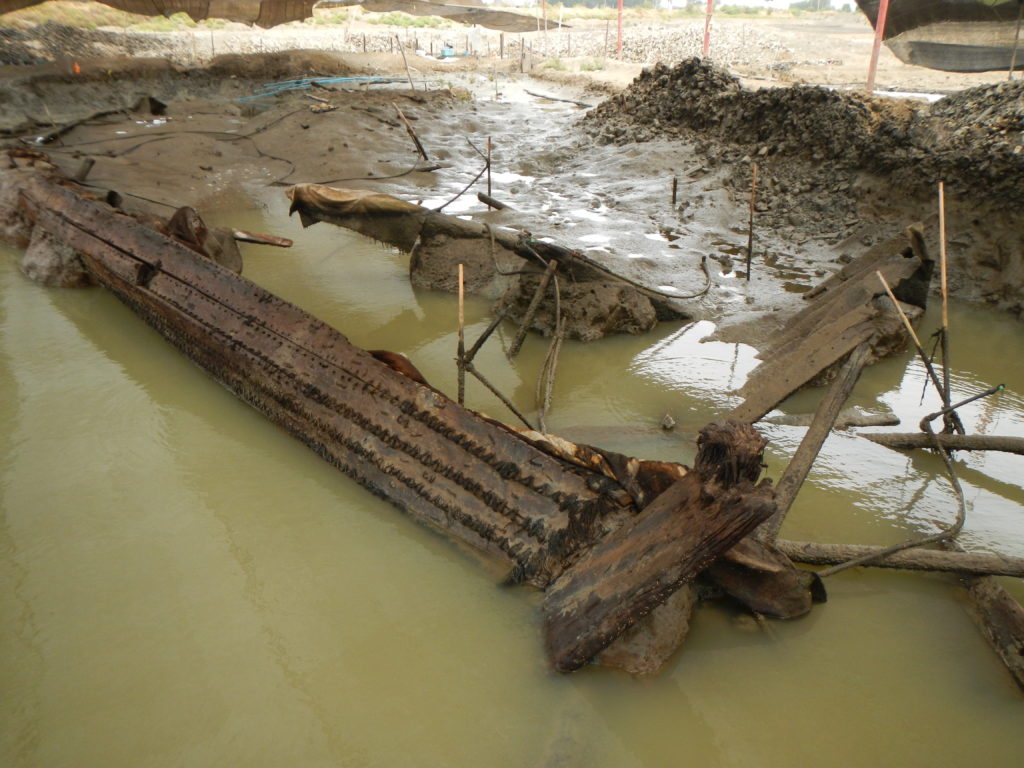
The remains of the 9th century Arab style, sewn vessel found in the Samut Sakhon province in Thailand. Lighthouse conservator Starr Cox was called in to consult on the preservation and conservation of the vessel this past March.
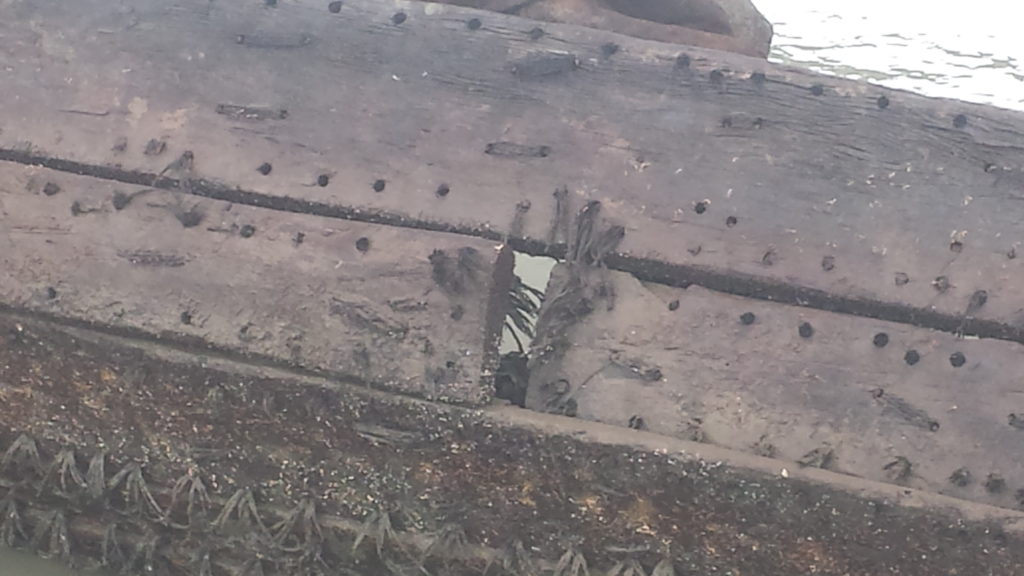
Many of the fibers used to sew the planks of the vessel together have already disappeared. This is one of the most important features of the vessel, and its deterioration is one of the things that prompted the organization of the conference and the consultation of our conservator, Starr Cox.
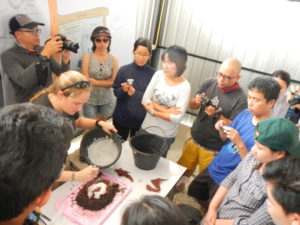
Here Starr leads a hands on activity teaching conference attendees how to use a plaster support to remove fragile artifacts from a site.
Experts in various aspects of the archaeological field were brought in to lecture on the design of the vessel and Arab boat building traditions, as well as historic site recording and the use of Geographical Information Systems (GIS) in an archaeological context.
The St. Augustine Lighthouse & Museum’s own underwater archaeological conservator, Starr Cox, was invited to consult on the conservation and preservation of the waterlogged vessel and artifacts. Over the course of the conference, she gave ten lectures to ASEAN archaeologists and museum professionals on various aspects of waterlogged artifact conservation, and led four hands on activities to help further train those who may be participating in the coming excavation and preservation of the vessel.
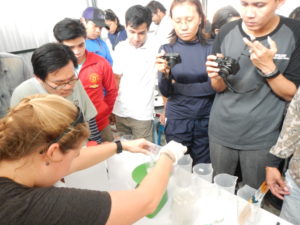
In another hands on activity, Starr instructs conference attendees on the process of consolidating artifacts. This process acts to strengthen the already existing structure of certain types of artifacts, ensuring it stays stable in one, consolidated piece.
After presenting her lectures and hands-on instruction to conference participants, and observing the vessel in its current state, Starr was able to provide the archaeologists in charge of the excavation with her professional recommendations for how to proceed with the conservation of the site.
Starr said of her experiences at the conference, “It was a great opportunity in many ways. Not only was I able to share my knowledge to help preserve this incredible find, but I was also able to take away new knowledge of how the maritime influence has affected their culture, in ways both similar and different to how it has affected our culture here in Florida.”
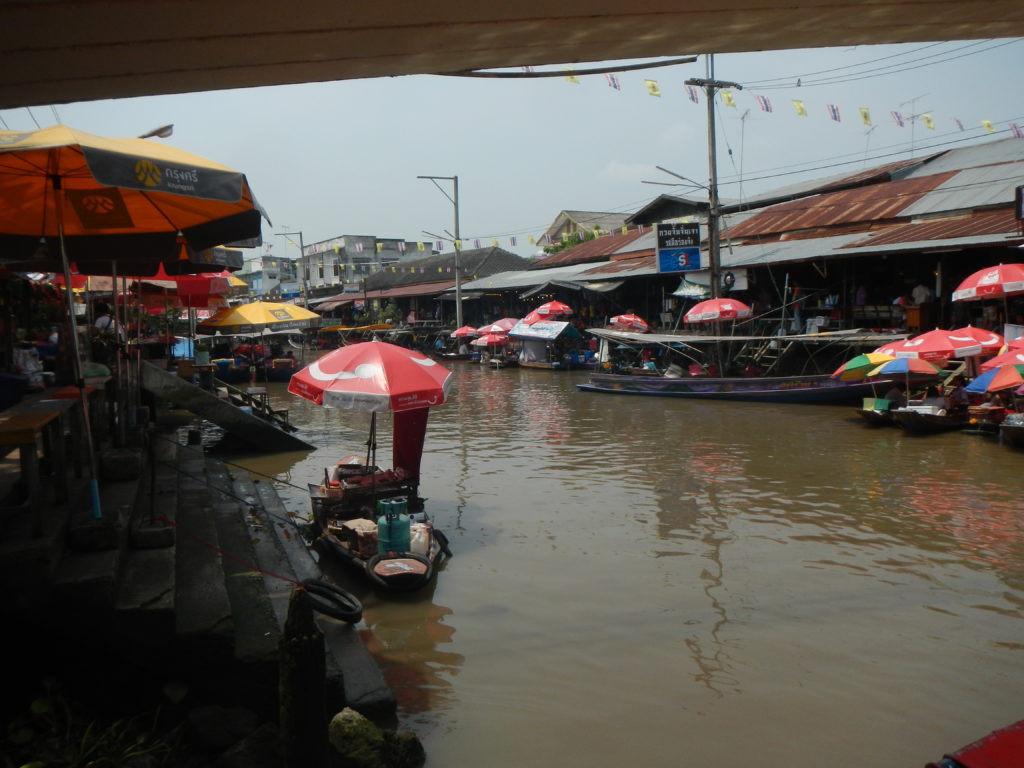
One of the things Starr appreciated about the trip was the opportunity to observe the influence of the maritime landscape in Thai culture, like this floating market the conference attendees visited on their one day off.
Archaeologist Olivia McDaniel first joined the St. Augustine Lighthouse & Museum team in 2012 as a student at LAMP’s Underwater Archaeology Field School. She officially joined the lighthouse family as an archaeologist in July, 2014, after completing her bachelor’s degree at the University of Idaho.

